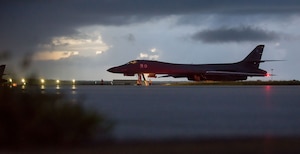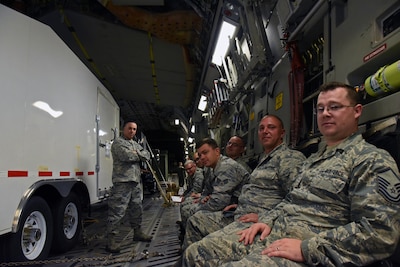By Air Force Tech. Sgt. Erich B. Smith National Guard Bureau
ARLINGTON, Va., Sept. 22, 2017 — After communication systems
in hurricane-affected areas of the Gulf Coast and American territories in the
Caribbean were decimated, a decade-old National Guard asset that eliminates
communication gaps was activated, according to National Guard officials.
The Joint Incident Site Communications Capability offers a
communications bridge to first responders tasked with saving lives and
protecting property during the domestic emergencies that resulted from this
year’s historically catastrophic hurricane season.
According to guard officials, 18 JISCC systems were deployed
to support relief efforts after Hurricanes Harvey and Irma made landfall. In
response to Hurricane Maria, there are currently four JISCCs on-site in Puerto
Rico and the U.S. Virgin Islands, with more to arrive.
Guard Readiness, Capabilities
The communications package is a representation of guard
readiness and capabilities, said Army Maj. Jason Franklin, a program manager
for the JSICC.
“The National Guard is constitutionally mandated to respond
and care for the homeland, and our domestic mission is contingent on the JISCC
for communications,” Franklin said.
Kevin Holland, a deputy division chief of the joint command,
control, communications and computers branch at the National Guard Bureau, said
that “9/11 glaringly exposed the communications challenges and gaps that had to
be filled in the chain between civilians and the military” during a domestic
disaster.
Eventually, Holland added, a prototype of the JICSS system
used during Hurricane Katrina in 2005 proved the concept “could do what we
wanted it to do.”
Satellite Communications
Using allocated bandwidth coordinated by U.S. Northern
Command, the JISCC system relies on satellite communications that enable the
use of high-frequency radio, data, video and voice capabilities. A mobile
system that can be airlifted, it also fits in the back of an 18-foot trailer,
equipped with its own lighting and power generation, and a satellite dish.
“It’s all-inclusive communication package that is designed
to be interoperable with first responders, and that’s a key and unique
element,” Franklin said. “We have to speak on multiple platforms with first
responders that are out there helping us [guard members] to get our hands dirty
and we are enabling them to get their hands dirty and save lives.”
The JISCC system also harnesses ongoing relationship
building among guard members and civilian-led forces, and between state
National Guard units through the Emergency Management Assistance Compact, he
said.
Franklin pointed to an example involving states nearly 3,000
miles away from each other.
Supporting Emergency Operation Centers
“The Florida National Guard took out an EMAC from Illinois
[National Guard] and pulled them down to Monroe County, Florida, which got hit
the worst from Irma,” he said. “As the first responders were waist-deep in
water -- fishing people out, fishing pets out -- the JISCC was directly
supporting emergency operation centers that were coordinating and communicating
for food and clean water.”
Standard blocks of JISCC systems are constantly upgraded to
the latest, fastest version of existing technology, with an emerging 5G
wireless connection, which, according to National Guard officials, will
dramatically increase the speed at which data is transferred across networks.
Recently, the guard rolled out the latest generation of a
JISCC with a mission tied directly to chemical, biological, radiological,
nuclear and environmental response efforts.
JISCC is also on-site for agencies battling wildfires in the
Pacific Northwest, and according to Air Force Maj. Brian W. Tennort, chief of
the joint command, control, communications and computers branch at the NGB, the
systems package is used as a communications backup for non-crisis events such
as sports and civil affairs events.
“When the JSICC goes out into the field, the National Guard
becomes the service provider for first responders,” Tennort concluded.








